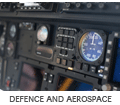Automated Snapper CL15 Test System
Posted in New Development on November 11, 2008 by Administrator
In preparation for manufacturing a large number of Snapper CL15 modules, we have been developing an automated test system for quickly and accurately finding assembly faults in Snapper CL15 modules. The test system will be sent to the manufacturer so that the modules can be tested and, if necessary, repaired at the point of assembly. In the past we have used our Autotester software, combined with a Rig 200 baseboard for testing Snapper modules. While this approach works reasonably well, it has a number of limitations which make in unsuitable for this task:
- It is too interactive. Many of the tests require user interaction or confirmation. For example, the audio test requires the user to confirm that a sound was played correctly, and the USB tests require the user to insert and remove a USB device. For large builds this interaction becomes both tedious and error prone.
- It cannot accurately find faults. A failed test in the Autotester only tells the user which sub-system is faulty, but not where the specific problem is. For example, the video sub-system of the Snapper CL15 comprises of more than 20 pins, but a failed video test in the Autotester does not give any information about which of these may be faulty.
- The Rig 200 baseboard does not expose all of the features of the Snapper CL15 in an easy to test way. While the major features of the Snapper CL15 are accessible on the Rig 200 baseboard, many of them require some additional hardware to actually test the functionality.
To solve these problems, we have developed the Snapper CL15 test jig. The test jig is a standard Snapper CL15 baseboard which has been designed to fully automate the testing of all of the Snapper CL15 features. In the event of a failure, very specific information about the nature of the fault, often referencing a single pin, is given. The problem of requiring external hardware for testing some peripherals is solved by having an FPGA which can monitor and drive pins on the Snapper CL15. The FPGA enables tests which previously required user interaction, such as video test, to be fully automated. For the video testing, the Snapper CL15 runs an application which configures a video mode and displays a test pattern. The FPGA has registers which contain information such as the number of clocks per line and the sum of the pixel data in the frame. The software running on the Snapper CL15 can verify that this information is correct. Many of the test procedures use loop-backs so that no user interaction is required. For example, the audio tests, which in the Autotester setup required a user confirmation that sound played correctly, loop the line-out to the line-in via an analogue switch. After initially testing that the left and right capture channels are working correctly by feeding a 1kHz (generated by the baseboard) to them, the line-out and high-power out are tested by looping them back to the line-in and comparing the captured audio with what was played. The test jig system will be able to fully test a Snapper CL15 module in around 2-3 minutes, with no user interaction other than insterting the Snapper CL15 module and checking the result of the test. Because the information about failures is highly specific, it enables the manufacturer to quickly find and correct any assembly faults with the modules.




